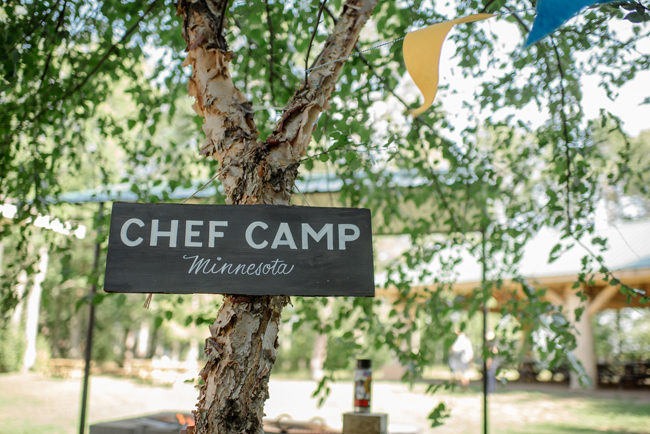
Over the Labor Day weekend, I didn’t just head up to the cabin; I joined sixty other food-obsessed adults for a wilderness cooking retreat called Chef Camp, held at YMCA Camp Miller, where chef-led classes, gourmet meals, and classic camp activities converged in the Minnesota North Woods. What follows are my top five takeaways from the weekend.
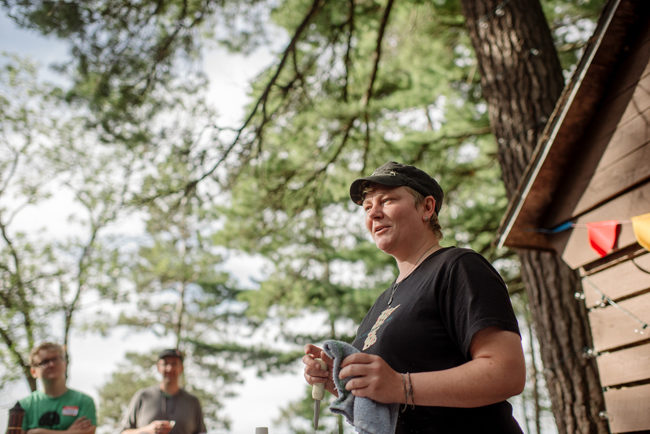
ONE: How to shuck an oyster without sending yourself to the ER.
We had just finished breakfast. It was the first class at Chef Camp, and Sarah Master, the executive chef at Mr. Roberts Resort had us gather around a bonfire. Above us, tall red pines swayed. Before Master on a table were a blue mesh bag of oysters, a stack of linen towels, and a pile of oyster knives. We were handed a set of each so we could give oyster shucking a try.
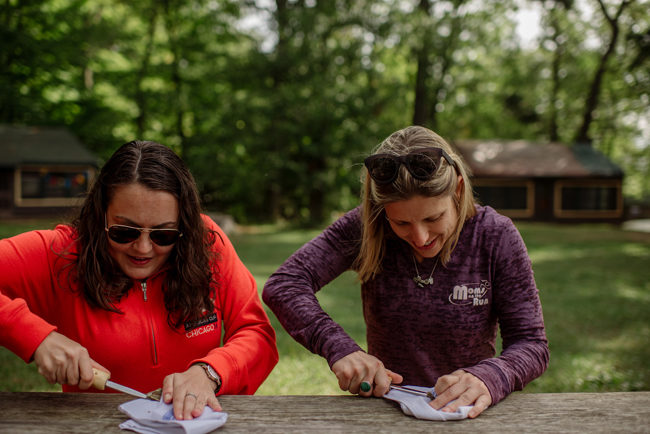
To approach this like a pro, take a towel in your hand, along with the oyster, making sure the flat side of the shell is facing up. In the other hand, grab your oyster knife and wedge the knife firmly, vertically, right at the hinge of the shell, and wait until it pops open a bit. Then, use the knife blade to pry the rest of the shell open. Wipe the knife to remove any bits of shell or grime, and then work the knife under the oyster to remove it from the bottom shell, being careful to retain the oyster liquor.
Had I eaten plenty of oysters in my day? Yes. I’m at a foodie camp, after all. But shuck one? Never. It proved to be an easy check for some of us, harder for others, depending on how straight or rippled the shell was. We learned that East Coast oysters generally have a briny, mushroom flavor, while West Coast oysters tend to have more of a tart flavor.
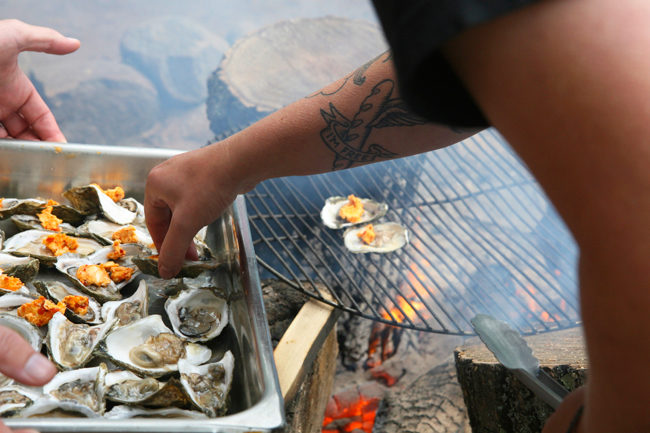
Master’s oyster shucking prowess made more sense once I asked how she came to cooking. After studying pre-18th-century British literature in college, she decided she wasn’t hip on teaching. She blindly put a finger on a map of the U.S., and moved to New Orleans. Debating her path, and always knowing she loved food, she went to culinary school. We saw the richness of Master’s France-by-way-of-Southern influence in the classic mignonette we used to dress half the oysters. It was a mix of red wine vinegar, minced shallot, and freshly grated pepper. On the other half, we dolloped a spicy orange sambal-garlic butter. We cooked both versions over the fire for four or five minutes, until the edges curled slightly and the butter melted into the shell. Then, down the hatch they went, the perfect campfire delicacy.
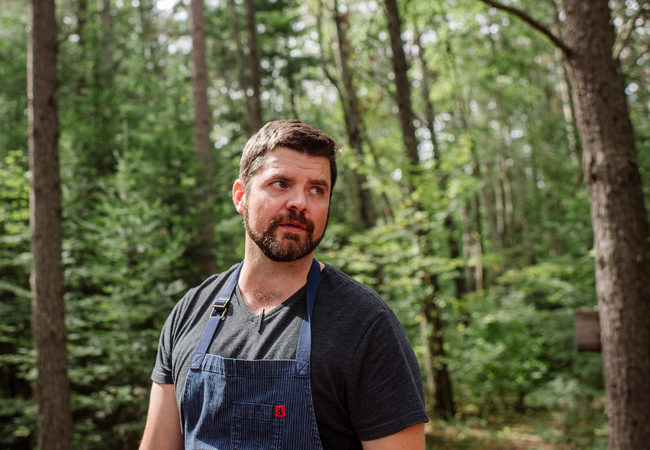
TWO: Yeast can be harvested from anything.
Of the countless things I learned at camp, one that absolutely blew my mind is that sourdough starter can be made from pine cones. Ryan Stechschulte, a sous chef at Spoon and Stable, sent scouts to Camp Miller three months ahead of time to gather pine cones to use for a wild yeast culture. He boiled the pine cones in water and added flour to slowly develop the starter over several weeks. What resulted were naturally leavened sourdough loaves that beautifully integrated the tall-pine terroir of our North Star forest “classroom.”

We continued our bread education by taking turns rolling out dough for laffa, a Middle Eastern flatbread, and by listening to Stechschulte talk about berbere, an Ethiopian blend of chili peppers, garlic, ginger, fenugreek, cardamom, cumin, black pepper, allspice, turmeric, cloves, cinnamon, and coriander. The complexity came through in a simple sprinkling of this deep-red spice over hot, cast-iron grilled laffa drizzled with olive oil.
“If you want to be really good at something, you have to be ready to mess up,” Stechschulte tells us, as he moved on to making cornbread in a cast-iron Dutch oven. Later, as we ate spoonfuls of the moist cornbread straight from the pot, savoring the velvety crumb lent by the creamed corn in the batter, I silently wondered just how many times he’d messed up to get to this sigh-inducing moment.

THREE: Only one percent of mushrooms are actually edible.
For our wildly anticipated foraging class, we were led along the lakefront for a hike out to Jamie Carlson’s classroom on the camp’s point. Our eyes were keen to pick out any mushrooms on our wooded path. We found Carlson (who writes the blog You Have to Cook it Right) decked out in camouflage, sitting by his fire with a cast-iron pot and skillet on the stove in front of him. “The only two cooking instruments you’ll ever need,” he says. “I can make anything with these.” Earlier that day, Carlson had led a group of foragers on a hike, during which lobster mushrooms (not actually a mushroom, but a fungus that grows on certain mushroom species, giving them a reddish-orange hue) and black trumpets were found.
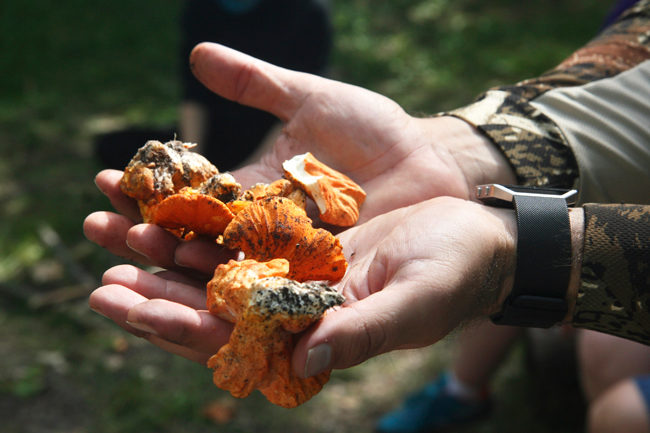
For our risotto class, we worked with giant puffball mushrooms. I picked up one that Carlson had foraged, and it was as heavy as a baby and as big as a basketball. As you’d imagine, they’re great for foraging because they’re easy to see. They’re best to eat when they’re about the size of a fist because they start to decompose once they get larger.
We helped Carlson chop onion and garlic for the risotto we began to cook over the wood fire. As the water boiled and the aromatics sauteed, we listened to Carlson share his passion for foraging and cooking in the wild. “There’s a certain magic in finding, hunting, and cooking something right where you found it, with the edibles present around you,” he says. His stories triggered that deep Minnesotan survival instinct (you know, the one akin to House Stark’s mantra that “winter is coming”), drawing us into the rugged appeal of living off the land.
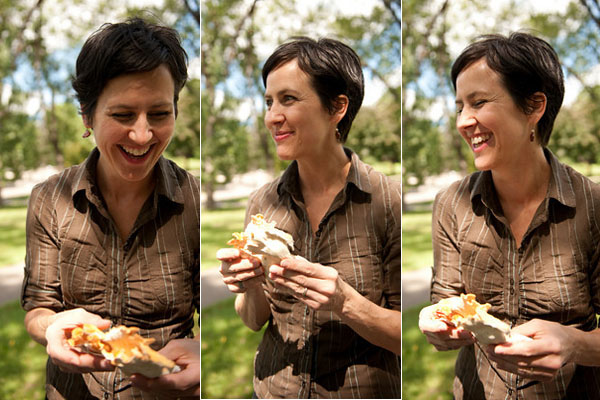
We learned there are over 3 million types of mushrooms in the world, and yet, only 1 percent are edible. While scouting the Minnesota landscape for his bow hunts, Carlson developed an interest in the wild mushrooms he found in abundance on his path. He recommends Mushrooms of the Upper Midwest by Teresa Marrone and Kathy Yerich (above) to anyone beginning their foraging journey. Best part? The authors are from Minnesota and know our local flora.
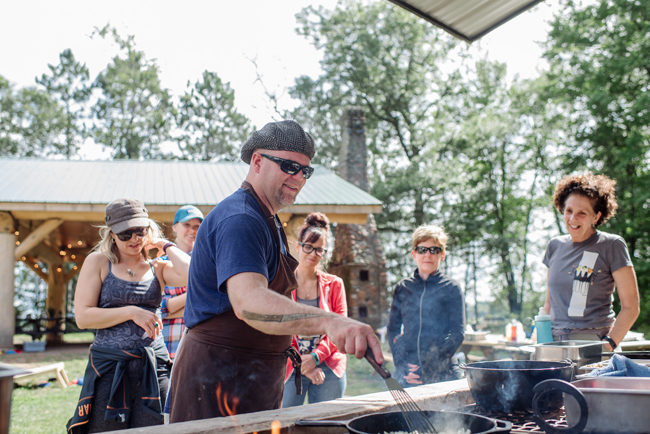
FOUR: Using the “fruit” of your land creates food authenticity.
“It’s important to feel a connection to where you live,” says J.D. Fratzke, a chef-owner of Saint Dinette and The Strip Club Meat and Fish. “Centuries ago, just imagine how flavors were transmitted. People shared spices from their homeland saying, ‘I want you to taste where I come from.’ We learn to speak each other’s language by sharing flavors and food.”
Listening to Fratzke speak is a lullaby to anyone foodcentric. “Anything you’re inspired by, whether it’s history, art, or music, can be translated onto the plate,” he says. Fratzke’s interest in the merging of ideas and worlds is so primal in his cooking that you can’t help but be enveloped in his stories about the history of the spice trade, or how wild rice is harvested by native tribes, or how reading books rich in descriptive and sensory language feeds his soul for cooking. His top literary muses? The Collector of Worlds by Iliya Troyanov and Returning to Earth by Jim Harrison.
Fratzke’s style involves using native Minnesota foods with an homage to the countries, cuisines, and spices currently feeding his curiosity. Think freshly caught walleye fillets poached in coconut milk for meen molee (a dish from Kerala, in southern India) served over a fragrant bed of mixed basmati and wild rice. Or Korean ssam, butter lettuce leaves wrapped around trout, bright red crayfish tails, vibrant pink pickled cabbage, and cilantro. Fratzke holds sacred cooking outdoors in his home state. He has instinctively — not because it’s trendy or the right thing to do — created a culinary North by embracing local ingredients.
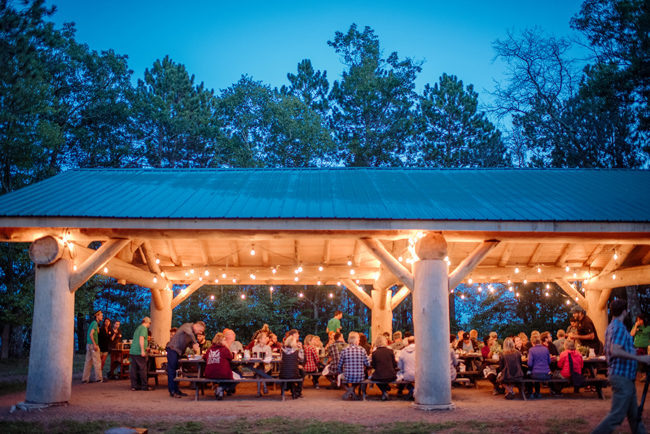
FIVE: Minnesota Nice is at work in our restaurant kitchens.
Call us Upscale Flannel, Team North, or Minnesota Nordic — we’ve got an unrivaled culinary scene happening in our state. How about this for Minnesota nice? Our chefs actually support one another. How do we get better? By getting better as a whole. “If one of my line cooks needs more hours, I’m calling a chef at a different restaurant to see if her restaurant needs more help,” Fratzke says. “Why would I do that? Because it helps everyone, and because I don’t get to spend time with my friends who are chefs; so this way, my cooks come back, mentored, sharing what they’ve learned, and I learn, too.”
Line cooks as pollinators for culinary and creative growth — sharing resources, and leaning on one another for fresh ideas. That’s what gives us our Minnesota Nice reputation, our culinary true North, and our depth of place. We don’t need to waste a second trying to emulate the big food cities; we’ve got what we need right here.
Tickets for next year’s Chef Camp are now on sale at Eventbrite. 2016’s edition sold out.

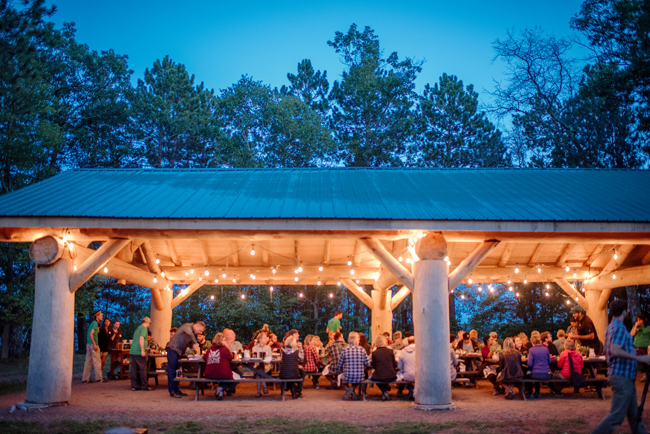
Terrific write up! I didn’t attend but after reading, feel like it was something special. How lucky we are to have this level of talent (chefs and educated passionate consumers) in Minnesota!
Thanks for sharing about this great weekend.
Thanks for mentioning the book I co-authored with Kathy Yerich, Mushrooms of the Upper Midwest. This event sounds like it was wonderful.